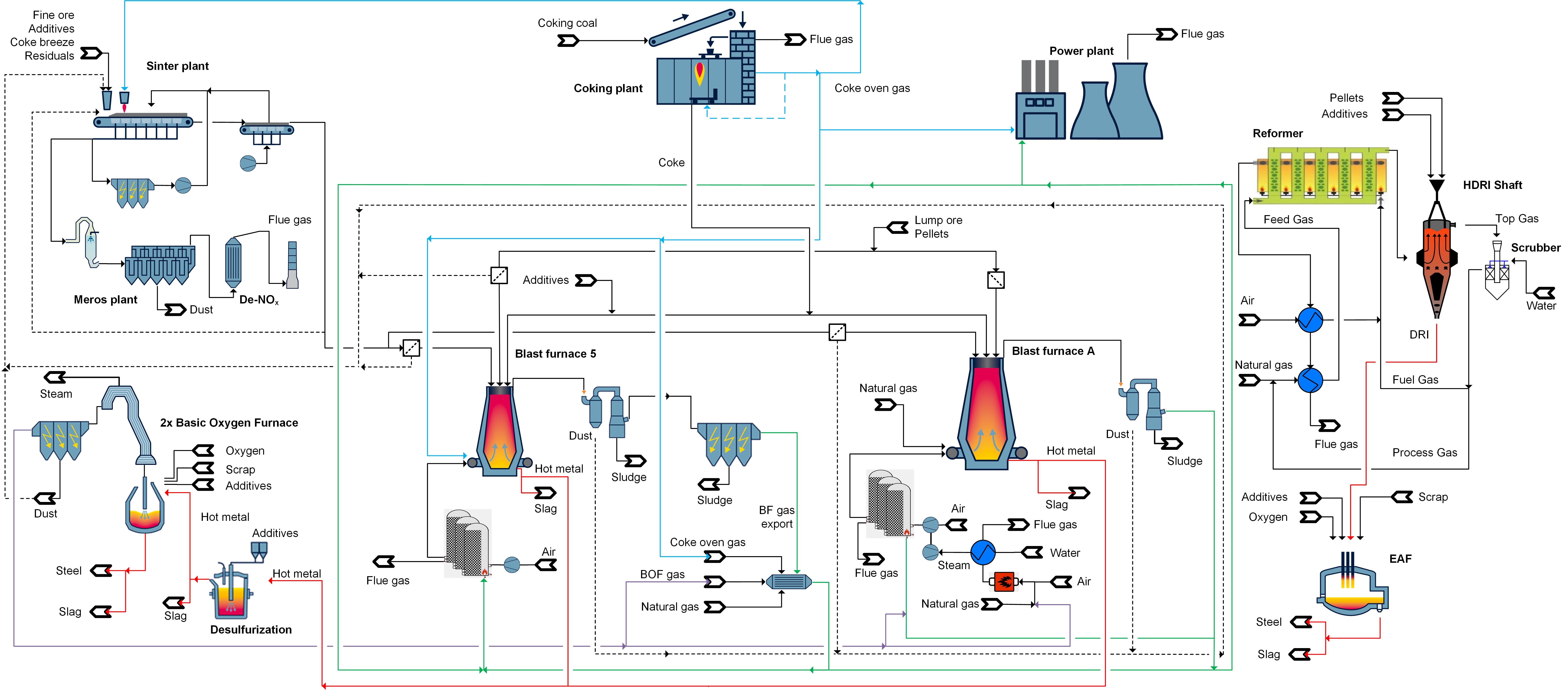Introduction
The metallurgic model library m.simtop has shown its abilities to improve integrated steel plant processes regarding operation optimization, environmental aspects, and process understanding.
Having a view on the complete process chain, influences of proposed changes on other process steps in a highly integrated system can be visualised and enable the assessment of changes in plant operation and the environmental impact. Reduction of the CO2 footprint can be easily optimized combining different measures.
Investigations are accompanied by considering general modelling aspects as interfaces to tools (Life Cycle Assessment / LCA, pinch analysis), use of global system analysis for identifying critical process parameters and models development as well as aspects of surrogate modelling to extract process models from alternative simulation environments and improving optimization.
Objectives and Motivation
- Use of the m.simtop model library to assess the multiple impacts of introduction of concepts to reduce the CO2 footprint of iron and steel production by hydrogen (H2) based steel production
- and integration of CCU technologies in integrated iron and steel plants
- Evaluation of the use of H2 in different production routes
- Integration of H2-production and comparison of CO2 footprint to traditional production routes
- Options for CO2-capture and conversion of CO2 to chemicals
- Reduction of N2-load via the use of oxyfuel concepts
- Assessment of amount of usable CO/CO2 and suitable products
- Heat integration of new/ processes and concurring resources (power, H2)
- Assessment of environmental impact
Methodology
- Collection and evaluation of data and models of H2- based steel and CCU technologies
- Extension of model library with CCU technologies, hydrogen-based processes, interfaces for pinch analysis and LCA
- Analysis of operation based on calibrated flow sheets/models (done with operation data) and identification of process bottlenecks and technological/chemical phenomena
- Evaluation of available metallurgical models for trace species chemistry
- Extension and improvement of chemical and technological functionalities of models
- Integration of water and wastewater cycles in the calculation of integrated steel plants
- Rigorous calculation of CO2 footprint and environmental impact of process routes
- Development of concepts to improve model implementation, validation, and optimization
- Evaluation of open-source platforms for modelling, pinch analysis, and LCA
Results and Application
Flexible and validated mathematical models and flow sheets should be available. These enable simulation of integrated steel plant setups and contribute to the optimization of integrated iron and steel production.
Consistent balances of production routes with traditional and alternative iron and steel steelmaking equipment are created. The distribution of utilities within the integrated steel plant is optimized.
The functionality of the m.simtop model library is being expanded and supplemented by hydrogen-based iron and steel production, CCU technologies, water and waste water cycles, interfaces to pinch analysis and LCA.
Consistent CO2 footprint and environmental impacts of traditional and alternative iron and steelmaking routes are used to support the selection of technologies that approach climate neutrality.
Protocols for the use of advanced modeling techniques are established. These modeling techniques relate to Global Systems Analysis (GSA) and surrogate modeling. GSA focuses on model validation and identification of critical process/model parameters. Surrogate modeling generates models based on other simulation environments and simplified models for process simulation and optimization.

 DE
DE EN
EN